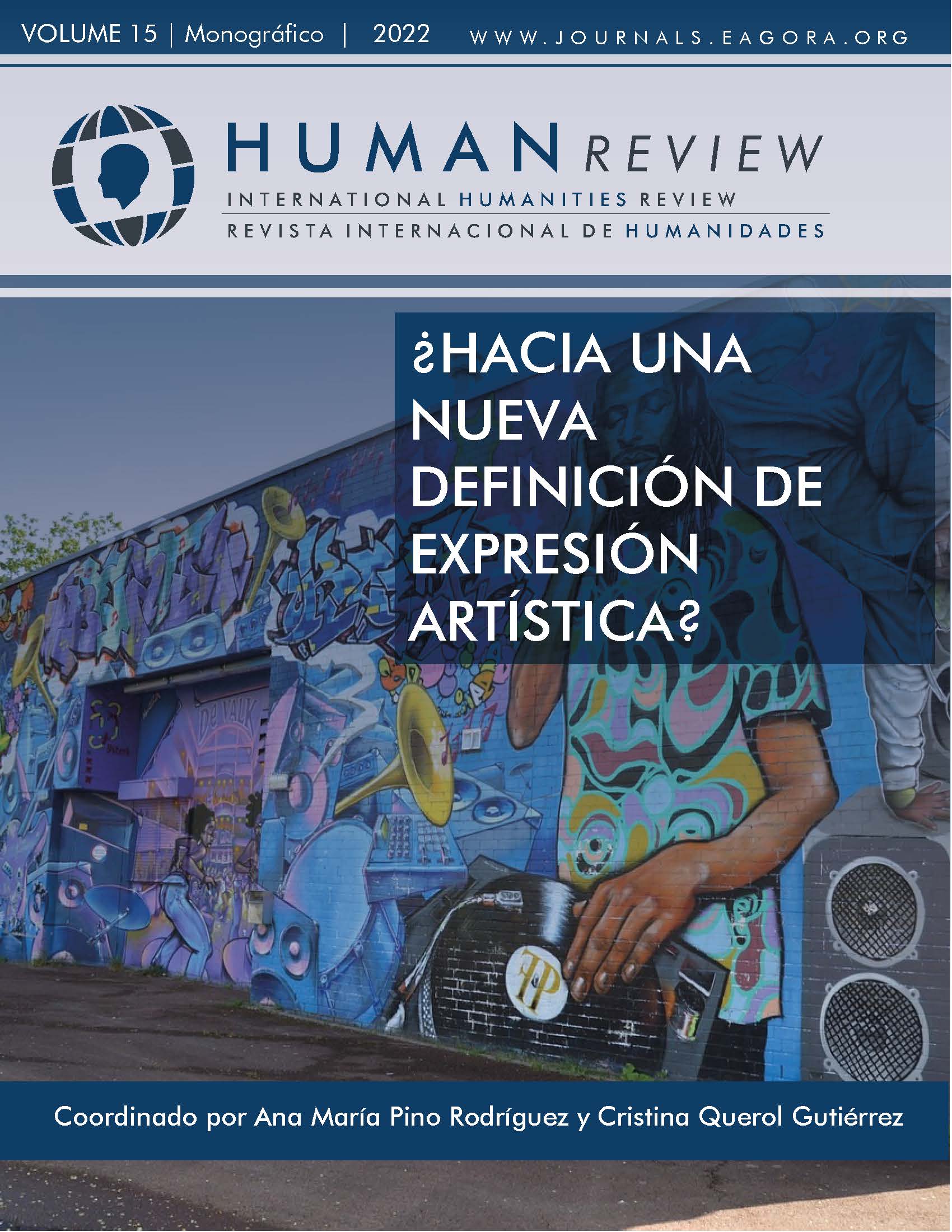Indeterminacy and structure of the off camera
Analítica del fuera de campo y su carácter constitutivo de la obra
DOI:
https://doi.org/10.37467/revhuman.v11.4352Keywords:
Offscreen, Appearance, Picture, Cinema, Derrida, Realismo, DreyerAbstract
A The offscreen (off camera or offstage) constitutes one of the main formal elements of cinema. Its centrality in the process of creation and in how it produces cinematic performances does not find enough intellectual interest in academic analyses, often more focused on “what appears on screen” than on what “does not appear”. This investigation aims to show this centrality in the shadow, this centrality of “what does not appear in the screen”, its radical importance and even its capacity to completely rewrite what de facto appears in the image. This would even lead to blurring the ontological entity of “what appears”, leading to the fact that what appears is precisely what was originally off camera.
References
Baudrillard, J. (1970). El sistema de los objetos. Siglo XXI.
Bazin, A. (1990). ¿Qué es el cine? Rialp.
Bergman, I. (Dirección). (1974). Scener ur ett äktenskap [Película].
Blumenberg, H. (2008). La legitimación de la edad moderna. Pre-textos. Pre-textos.
Bonitzer, P. (2007). Desencuadres. Cine y pintura. Arcos Editor.
Burch, N. ( 1985). Praxis del cine. Fundamentos .
Carpenter, J. (Dirección). (1978). Halloween [Película].
Carpenter, J. (Dirección). (1980). The Fog [Película].
Celine, L.-F. (1932). Viaje al fin de la noche. Edhasa.
Cuartango, R. (1999). Una nada que puede serlo todo. Límite.
Deleuze, G. (1984). La imagen-movimiento. Estudios sobre cine 1. Paidós.
Derrida, J. (1978). La verdad en pintura. Paidós.
Derrida, J. (1987). La retirada de la metáfora. Biblioteca electrónica Universidad ARCIS, Santiago de Chile.
Derrida, J. (1997). La farmacia de Platón. Fundamentos.
Derrida, J. (1997). La farmacia de Platón. En J. Derrida, La diseminación. Fundamentos.
Derrida, J. (2002). El cine y sus fantasmas (Conversación con Jacques Derrida). Desobra, Pensamiento, Arte, Política, (pp. 93-106).
Dreyer, C. (Dirección). (1964). Gertrud [Película].
Fisgativa Sabogal, C.M (2016). Los espectros y lo extraño: perspectivas derridianas del cine. Disertaciones, 2(5), 1-10. https://dialnet.unirioja.es/descarga/articulo/5891591.pdf
Hoffman, E. (1817). El hombre de la arena. Libros del zorro rojo.
Iser, W. (1987). El acto de leer. Teoría del efecto estético. Taurus.
Iser, W. (1993). La estructura apelativa de los textos. En D. Rall, En busca del texto. Teoría de la recepción literaria. (pp. 99-119) Universidad Nacional Autónoma de Mexico.
Kant, I. (1790). Crítica del discernimiento. Alianza.
Kant, I. (1975). Hacia la paz perpetua en Ensayos sobre la paz, el progreso y el ideal cosmopolita . Cátedra.
Lebrun, G. (2008). Kant y el final de la metafísica: Ensayo sobre la Crítica del Juicio. Escolar y Mayo.
Mann, T. (1947). Doctor Faustus. Edhasa.
Monroy, V. (2020). Contra la cinefilia: historia de un romance exagerado. Clave Intelectual.
Reguillo, R. (2021). Conjugar en tiempo forense. En R. Reguillo, Necromáquina. Cuando matar no es suficiente (pp. 221-232). Ned ediciones.
Tarkovski, A. (2008). Esculpir en el tiempo. Rialp.
Tudela Sancho, A. (2003). Jacques derrida y los fantasmas del cinematógrafo. Revista de Filosofía. Nº45. https://produccioncientificaluz.org/index.php/filosofia/article/view/18059/18048
Žižek, S. (2013). Lacrimae rerum. Ensayos sobre cine moderno y ciberespacio. Debate.
Downloads
Published
How to Cite
Issue
Section
License
Those authors who publish in this journal accept the following terms:
- Authors will keep the moral right of the work and they will transfer the commercial rights.
- After 1 year from publication, the work shall thereafter be open access online on our website, but will retain copyright.
- In the event that the authors wish to assign an Creative Commons (CC) license, they may request it by writing to publishing@eagora.org









